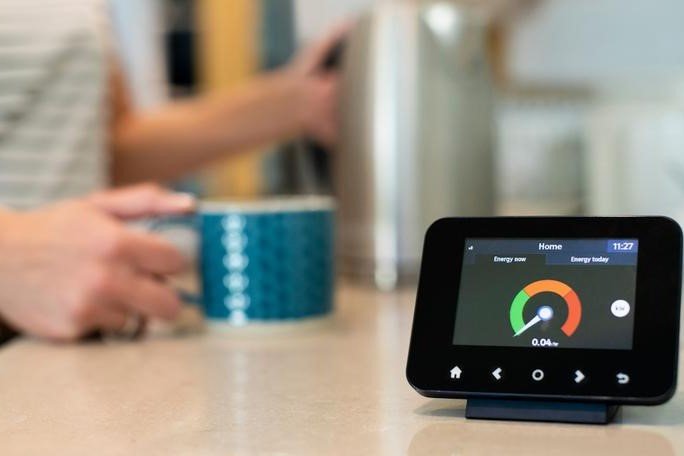A quiet revolution is brewing in the world of homebuilding—one where circuits, sensors, and smart systems don’t just talk, but actually listen and act. For a change, it’s not about glitzy gadgets—it’s about making homes work for the people inside.
Builders and tech startups are teaming up to bring brains to buildings, and at the heart of it all is RIoT, a quietly growing force reshaping how homes are designed, built, and lived in. What used to be a clunky mess of DIY devices is morphing into something more unified, thoughtful, and surprisingly easy to manage.
From Frustration to Function: A Smarter Start for Builders
For years, builders kept their distance from smart home tech.
Too many brands. Too many systems. Too much room for error.
But Brian McCarthy, a New Mexico homebuilder, saw an opening. Rather than dodging the complexity, he simplified it. His startup, RIoT Technology, created a smart kit with all the essentials—sensors, valves, software—and made it builder-friendly. Now, 60 homes are already online and counting.
One-sentence paragraph? Here it is.
The trick wasn’t high-end hardware. It was delivering a kit that trades and subcontractors could install without second-guessing themselves.
The result? Builders no longer treat smart tech like an optional upgrade. They’re baking it in.
Smarter Plumbing, Safer Homes, Fewer Claims
Installing smart systems during construction turns out to be a lifesaver—literally and financially.
Take pipes. A frozen line can ruin a home—and a builder’s profit margin. But RIoT’s system separates internal and external plumbing and lets homeowners shut off the outside lines before a freeze. Try retrofitting that.
Here’s why builders are interested:
-
Warranty claims for burst pipes are among the most common—and costly.
-
Sensors for water leaks and pressure loss reduce damage before it happens.
-
Filters monitored by pressure drops save homeowners up to 15% on energy bills, according to Constellation Energy.
Even something as mundane as a dirty dryer vent becomes a financial lever. Less airflow equals more energy and fire risk. But with RIoT, homeowners get nudged with alerts before it turns into a problem.
One sentence can speak volumes.
Builders win by avoiding service calls. Homeowners win with peace of mind and lower bills.

Real Data, Real Decisions: The Brains Behind the Walls
Utility bills are dumb. They measure how much energy you use—not how you use it.
McCarthy wants to change that. RIoT tracks real-time home performance: from indoor air quality to temperature regulation to failed ventilation systems.
One of the biggest blind spots? ERVs—Energy Recovery Ventilators. They’re supposed to keep fresh air flowing in tight homes, but when they break, no one knows. Until now.
Schell Brothers, a homebuilder in Delaware, is testing RIoT in employee homes. Their goal: use real airflow data to ditch outdated maintenance rules and replace filters only when needed.
Here’s a look at how RIoT’s insights compare to traditional practices:
| Feature | Traditional Method | RIoT Smart Monitoring |
|---|---|---|
| Furnace Filter Replacement | Every 6 months (guesswork) | Based on actual airflow data |
| Leak Detection | After visible damage | Real-time alerts |
| Energy Use | Utility bill summary | Room-by-room usage tracking |
| ERV Monitoring | Manual check (rare) | Sensor-driven performance logs |
| Air Quality | Rarely monitored | Live indoor environment data |
No more guesswork. No more one-size-fits-all. It’s like giving your house a Fitbit.
Goodbye Energy Star? RIoT Fills the Void
Energy Star has long helped buyers find energy-efficient products. But now the program might be on the chopping block.
McCarthy sees an opening.
“Without Energy Star, consumers lose the benchmark,” he says. “RIoT can help fill that vacuum with data.”
This matters. Builders can now offer optional insulation upgrades—like going from R-49 to R-60—and actually prove their value.
Today, that decision is made on faith.
Tomorrow, it’ll be based on years of real-world data from homes across the country.
And it goes further. Tim O’Brien Homes is collecting info on how external weather affects indoor comfort, mapping how solar energy flows through the house, and using that insight to tweak future builds.
A Healthier Home, Without the Hype
Smart homes aren’t just about light switches and thermostats anymore. They’re getting personal.
RIoT is pushing into health territory. Air quality, lighting, humidity—all monitored in real time. McCarthy even dreams of syncing that data with wearables to map how your home affects your sleep, energy, and mood.
That’s no small thing when you spend 70% of your life indoors.
Some builders are ahead of the curve. Schell Brothers’ software, Heartbeat, runs their entire operation—and now it’s feeding data from RIoT into that same pipeline.
Others, like LIVV Homes in Las Vegas, are experimenting with digital twins—virtual replicas of homes that simulate living conditions.
And then there’s insurance.
McCarthy believes insurers could eventually offer discounts to homeowners who actively monitor and maintain their systems. Less risk, fewer claims, better outcomes.
That’s a win across the board.
The Real Revolution: Appliances That Talk to Each Other
This isn’t just about dashboards and alerts.
McCarthy sees a future where your dryer talks to your power meter, your HVAC checks with your solar battery, and your thermostat stops heating an empty house just because it’s 6 p.m.
That’s huge. Especially as time-of-use billing spreads.
Peak-hour power rates can spike up to 700% between 4–7 p.m.
If homes can shift activity away from those windows—even slightly—that’s a massive savings opportunity. Not just for households, but for the grid itself.
McCarthy puts it simply: “There’s enough electricity in the world. Just not always in the right place at the right time.”
In the near future, your home might be smart enough to know when to chill—and when to chill out.








